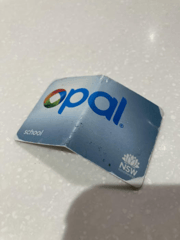Are you being ripped off? Shoppers discover one MASSIVE price difference between Coles and Woolworths
By
- Replies 22
When it comes to groceries, it pays to shop around.
No two supermarkets are alike, and each offers its own unique pricing structure for the items it sells. That means that if you want to get the best deal on your groceries, you need to be willing to shop around.
Of course, this takes some extra time and effort. But if you're able to do it, you could potentially save a lot of money in the long run.
Most people are aware that there can be significant price differences between different supermarkets. However, many people don't realise just how much some of these prices can vary…
Just take, for example, the $2 price discrepancy between the same snack being sold at Woolworths and Coles.
No need to take a double look, folks! Customers were perplexed when they learned that Woolworths was selling Smith's Thinly Cut Potato Chips Share Pack Salt & Vinegar 175g for $4.30 while Coles was selling it for only $2.20.
One shopper took to Facebook to share the 'discovery', noting that they discovered a 'markup' instead of a markdown while shopping around for bargain deals.
'Not a markdown but a super markup! Woolworths price compared to Coles price. Inflation has gone mad,' the customer wrote.
Several shoppers tried to make sense of the significant price difference by pointing out that the Woolworths tag in the store said that the chips were gluten-free.
However, it should be noted that the chips from both retailers were gluten-free.

The $2.10 price difference between the same chips being sold at Coles and Woolworths has enraged shoppers. Credit: Facebook.
Retail expert Gary Mortimer commented on the issue, saying that the price discrepancy was 'interesting'.
He remarked: 'It's very peculiar at face value, they look like exactly the same product and exactly the same size.'
'I guess there could be a number of reasons why we've seen a price discrepancy between essentially the exact same product in different supermarkets.'
He speculated that Coles and Smiths could have worked out an agreement for a rebate, allowing the retailer to sell the item for a lower cost for a longer period of time, noting that the price tag at Coles indicates that the item is part of Coles' 'everyday low price' range.
Prof Mortimer explained: 'An everyday price tends to indicate a permanent price reduction and a stabilisation of price.'
'So with an everyday price, you would not expect to see that price discounted further, like a weekly special, you would also not expect that price to go up.'
According to the expert, the Woolworths tag did not say the item was on sale or at a discount, therefore there is a potential that the chips will eventually be put on sale.
Many supermarkets use a high-low pricing approach, where products are initially priced at the suggested retail price before being reduced.
'So all products are put on a supermarket shelf based on the cost to supply plus a margin, which the retailer takes as profit,' he elaborated.
'And then when they discount those products, both the retailer takes a hit, as in the retailer funds some of that discounting, and the supplier funds some of that discounting.'
Prof Mortimer also noted that these discounts usually last for a week.

According to Prof. Mortimer, most supermarkets would use high-low pricing, allowing buyers to nab a bargain. Credit: AAP.
A Woolworths representative explained the retailer's pricing strategy, saying that while the company is 'working to continue to provide our customers with great value it's important we also support our suppliers in covering their increasing production costs.'
'This ensures they can continue to meet the food and groceries needs of all Australians,' the spokesperson added.
'Managing industry-wide inflationary pressures will continue to be the focus for us as we work hard to provide customers with great value in partnership with our suppliers through programs like Prices Dropped for Winter and Price Freeze, as well as the thousands of weekly specials.'
This story just proves that you can maximise your budget if you take your time and scan through items to find a lower deal. Sometimes, some retailers can offer the same product at a lower price through their agreements with the suppliers and only those who meticulously shop around can take advantage of these deals.
So, there you have it, folks! What are your thoughts on this? Better yet, have you experienced a similar incident where you noticed that the same item was being retailed at a significantly higher cost at different supermarkets? Share your thoughts with us in the comments below!
No two supermarkets are alike, and each offers its own unique pricing structure for the items it sells. That means that if you want to get the best deal on your groceries, you need to be willing to shop around.
Of course, this takes some extra time and effort. But if you're able to do it, you could potentially save a lot of money in the long run.
Most people are aware that there can be significant price differences between different supermarkets. However, many people don't realise just how much some of these prices can vary…
Just take, for example, the $2 price discrepancy between the same snack being sold at Woolworths and Coles.
No need to take a double look, folks! Customers were perplexed when they learned that Woolworths was selling Smith's Thinly Cut Potato Chips Share Pack Salt & Vinegar 175g for $4.30 while Coles was selling it for only $2.20.
One shopper took to Facebook to share the 'discovery', noting that they discovered a 'markup' instead of a markdown while shopping around for bargain deals.
'Not a markdown but a super markup! Woolworths price compared to Coles price. Inflation has gone mad,' the customer wrote.
Several shoppers tried to make sense of the significant price difference by pointing out that the Woolworths tag in the store said that the chips were gluten-free.
However, it should be noted that the chips from both retailers were gluten-free.
The $2.10 price difference between the same chips being sold at Coles and Woolworths has enraged shoppers. Credit: Facebook.
Retail expert Gary Mortimer commented on the issue, saying that the price discrepancy was 'interesting'.
He remarked: 'It's very peculiar at face value, they look like exactly the same product and exactly the same size.'
'I guess there could be a number of reasons why we've seen a price discrepancy between essentially the exact same product in different supermarkets.'
He speculated that Coles and Smiths could have worked out an agreement for a rebate, allowing the retailer to sell the item for a lower cost for a longer period of time, noting that the price tag at Coles indicates that the item is part of Coles' 'everyday low price' range.
Prof Mortimer explained: 'An everyday price tends to indicate a permanent price reduction and a stabilisation of price.'
'So with an everyday price, you would not expect to see that price discounted further, like a weekly special, you would also not expect that price to go up.'
According to the expert, the Woolworths tag did not say the item was on sale or at a discount, therefore there is a potential that the chips will eventually be put on sale.
Many supermarkets use a high-low pricing approach, where products are initially priced at the suggested retail price before being reduced.
'So all products are put on a supermarket shelf based on the cost to supply plus a margin, which the retailer takes as profit,' he elaborated.
'And then when they discount those products, both the retailer takes a hit, as in the retailer funds some of that discounting, and the supplier funds some of that discounting.'
Prof Mortimer also noted that these discounts usually last for a week.
According to Prof. Mortimer, most supermarkets would use high-low pricing, allowing buyers to nab a bargain. Credit: AAP.
A Woolworths representative explained the retailer's pricing strategy, saying that while the company is 'working to continue to provide our customers with great value it's important we also support our suppliers in covering their increasing production costs.'
'This ensures they can continue to meet the food and groceries needs of all Australians,' the spokesperson added.
'Managing industry-wide inflationary pressures will continue to be the focus for us as we work hard to provide customers with great value in partnership with our suppliers through programs like Prices Dropped for Winter and Price Freeze, as well as the thousands of weekly specials.'
This story just proves that you can maximise your budget if you take your time and scan through items to find a lower deal. Sometimes, some retailers can offer the same product at a lower price through their agreements with the suppliers and only those who meticulously shop around can take advantage of these deals.
So, there you have it, folks! What are your thoughts on this? Better yet, have you experienced a similar incident where you noticed that the same item was being retailed at a significantly higher cost at different supermarkets? Share your thoughts with us in the comments below!







